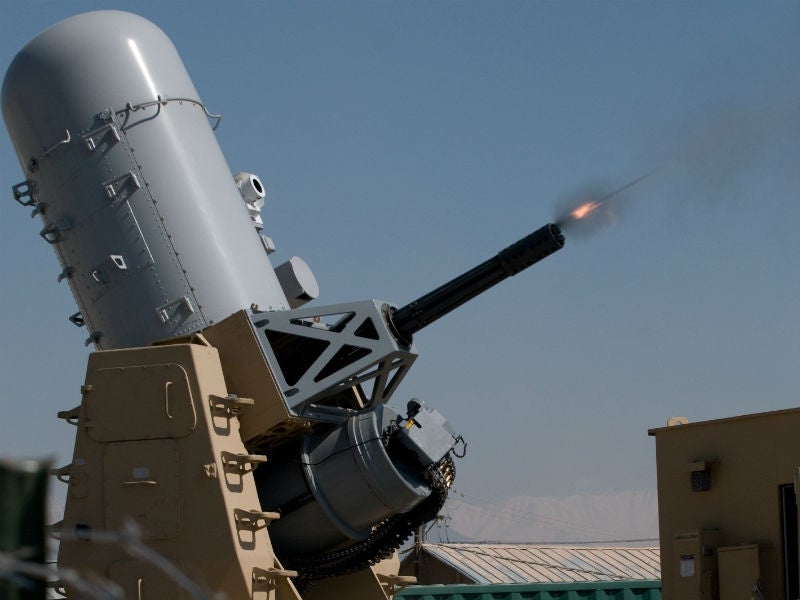
US defence contractor Raytheon has secured a $205m cost-plus-fixed-fee contract from the US Department of Defense (DoD) for the delivery of the Phalanx land-based weapon system to the US Army.
The self-contained, rapid-fire Phalanx land-based weapon system automatically locates, tracks, and kill assesses enemy threats, such as projectiles or enemy aircraft.
Raytheon Close-In Weapon Systems programme director Bridgitte Tapia told Army Technology: “The late December contract from the DoD for the Land-Based Phalanx Weapon System primarily provides training, logistical backing and sustainment towards the U.S. Army.
“The land-based Phalanx weapon system enables the U.S. Army to detect and destroy incoming threats on land and is part of their counter-rocket, artillery, and mortar system.”
While Phalanx can also be deployed at sea due to its ability to destroy anti-ship missiles, the land-based variant incorporates counter-rocket, artillery and mortar systems, and has the ability to detect and destroy incoming projectiles.
The Block 1B model also acts as a warning system for incoming attacks, allowing control station operators to visually track targets before making the decision to engage.
Phalanx is a 6,200kg, 4.7m tall self-contained unit armed with a single M61 Vulcan six-barrelled Gatling cannon. It has an ammunition capacity of 1,5500 rounds and a rate of fire of 4,500 rounds per minute. The estimated cost of a Phalanx unit is estimated at $5.6m.
Phalanx 1B also benefits from a forward-looking infrared sensor, allowing the system to protect against helicopters and high-speed surface craft at sea.
The DoD established the contract on 28 December 2018 and the completion date was set for 27 December 2023.



